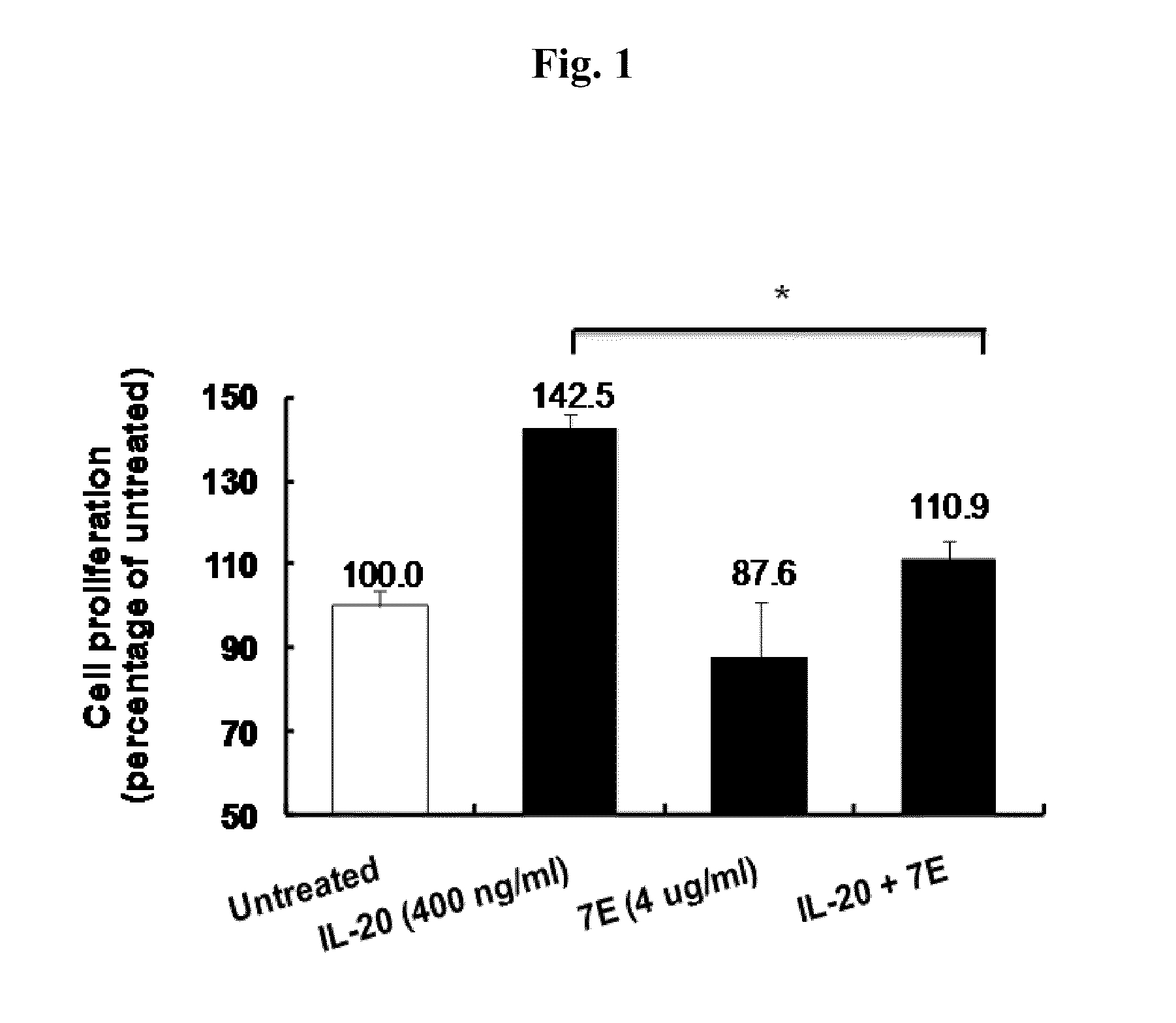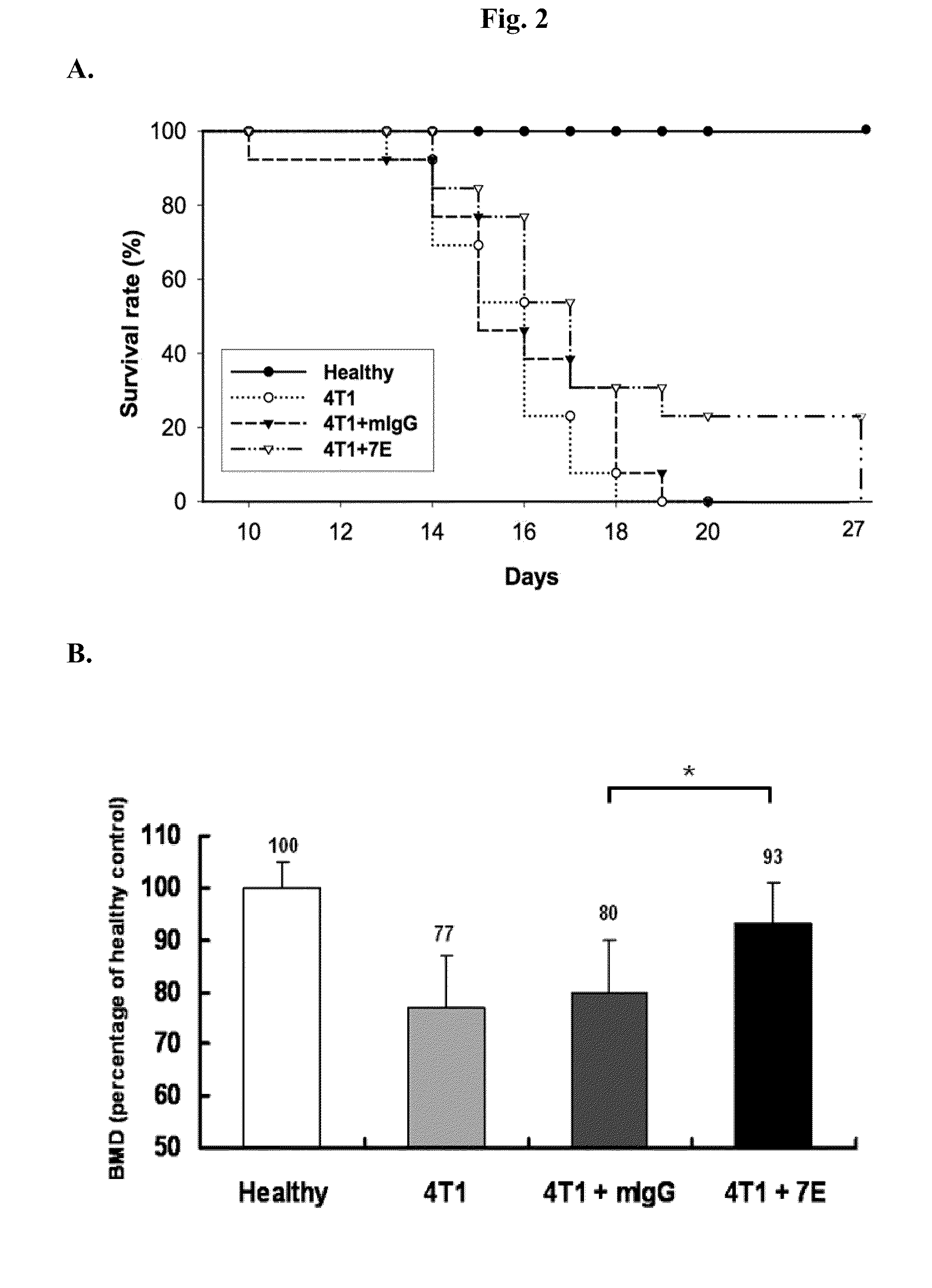Treating Breast Cancer and Inhibiting Cancer-Associated Bone loss with Anti-IL-20 Antibody
a breast cancer and anti-il-20 technology, applied in the field of breast cancer and inhibiting cancer-associated bone loss with anti-il-20 antibody, can solve the problem of rapid degradation of patient quality of li
- Summary
- Abstract
- Description
- Claims
- Application Information
AI Technical Summary
Benefits of technology
Problems solved by technology
Method used
Image
Examples
example 1
Inhibiting Breast Cancer Cell Growth with mAb7E
[0035]Mouse 4T1 cells (1×104) were cultured in DMEM supplemented with 10% FBS for 16 hours. The cells were then treated with (a) IL-20 (400 ng / ml), (b) mAb7E (4 μg / ml), or (c) a combination of IL-20 (400 ng / ml) and mAb7E (4 μg / ml) for 72 hours in DMEM supplemented with 1% FBS. After the treatment, the cells were incubated for 3 hours in the presence of 1 mg / ml MTT (Sigma-Aldrich, St. Louis, Mo.). The cells were then mixed with DMSO (Sigma-Aldrich) and their optical densities at 550 nm (OD550) were determined.
[0036]As shown in FIG. 1, IL-20 stimulated 4T1 cell growth and this stimulatory effect was reversed by anti-IL-20 antibody mAb7E. In addition, antibody mAb7E also inhibited 4T1 cell growth in the absence of IL-20.
example 2
Treating Breast Cancer with mAb7E
[0037]Mouse breast cancer 4T1 cells, cultured under routine conditions, were suspended in PBS at a concentration of 1×105 / 100 μL. The cells were then injected directly into the left ventricle of 6-wk-old female BALB / c mice, which were anesthetized with pentobarbital (Sigma-Aldrich) at 50 mg / kg body weight via i.p., using an insulin syringe (29 gauge, BD Ultra-Fine; Becton Dickinson). After injection, the mice were randomly assigned into 3 groups (n=6 / group), each treated by i.p. as follows:
[0038]Group 1: treated with PBS as a vehicle control three time in one week
[0039]Group 2: treated with a control mouse IgG (mIgG) at 4 mg / kg three times in one week
[0040]Group 3: treated with mAb7E at 4 mg / kg three times in one week.
[0041]Mice not injected with 4T1 cancer cells were used as healthy controls. The survival rates of the three groups and the healthy controls were monitored on a daily basis until the end of the experiment.
[0042]As shown in FIG. 2, panel...
PUM
 Login to View More
Login to View More Abstract
Description
Claims
Application Information
 Login to View More
Login to View More - R&D
- Intellectual Property
- Life Sciences
- Materials
- Tech Scout
- Unparalleled Data Quality
- Higher Quality Content
- 60% Fewer Hallucinations
Browse by: Latest US Patents, China's latest patents, Technical Efficacy Thesaurus, Application Domain, Technology Topic, Popular Technical Reports.
© 2025 PatSnap. All rights reserved.Legal|Privacy policy|Modern Slavery Act Transparency Statement|Sitemap|About US| Contact US: help@patsnap.com


